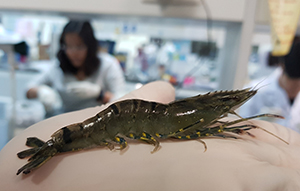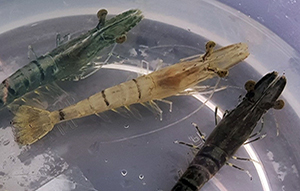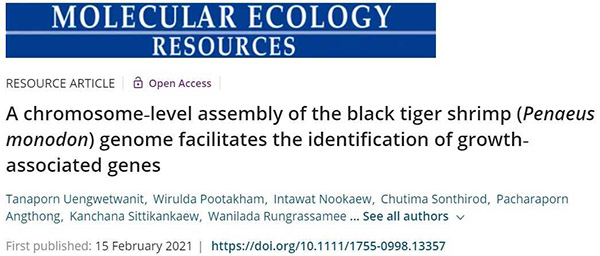The black tiger shrimp (Penaeus monodon.) is an economically important aquatic animal for many countries including Thailand. P. monodon belongs to the penaeid marine shrimps (Family Penaeidae) which are the predominately cultured group with an annual production exceeding 4.5 million tons. The shrimp aquaculture, however, has been threatened by many challenges such as devastating infectious disease outbreaks, poor reproductive maturation in captivity, and slow growth. To address these problems, the shrimp biology in response to its environment and cultivation practice at a molecular level must be understood. The availability of the genome sequence of this shrimp species will undoubtedly accelerate better understanding of various biological processes for improvement of farming practices and selective breeding programs. Our consortium aimed to decipher the black tiger shrimp genome to assist the shrimp scientific community to reach the ultimate goal of sustainable shrimp farming industry.
Current status of this project
We have successfully deciphered the first chromosome‐level whole‐genome assembly of P. monodon. The combination of long‐read Pacific Biosciences (PacBio, ~77x coverage) and long‐range Chicago (51.43x) and Hi‐C (49.8x) technologies enabled a successful assembly of this first high‐quality genome sequence. The final assembly covered 2.39 Gb (92.3% of the estimated genome size) and contained 44 pseudomolecules, corresponding to the haploid chromosome number. The current version (v0) of the annotation was generated with AUGUSTAUS and BLAST (Uengwetwanit et al., 2021).
In addition, we have generated the first full-length transcriptome assembly from nine major organs of the black tiger shrimp (Pootakham et al., 2020). The reference full-length transcripts provide a valuable resource for transcriptome profiling studies under various conditions and facilitates the discovery of novel isoforms and alternative transcripts that vary with developmental stages, cell types and stress conditions.
With the advances in sequencing technology and the high-quality transcriptome assembly, the team was able to investigate the synergistic effects of unilateral eyestalk ablation and the live feed supplements (Sittikankaew et al., 2020).



